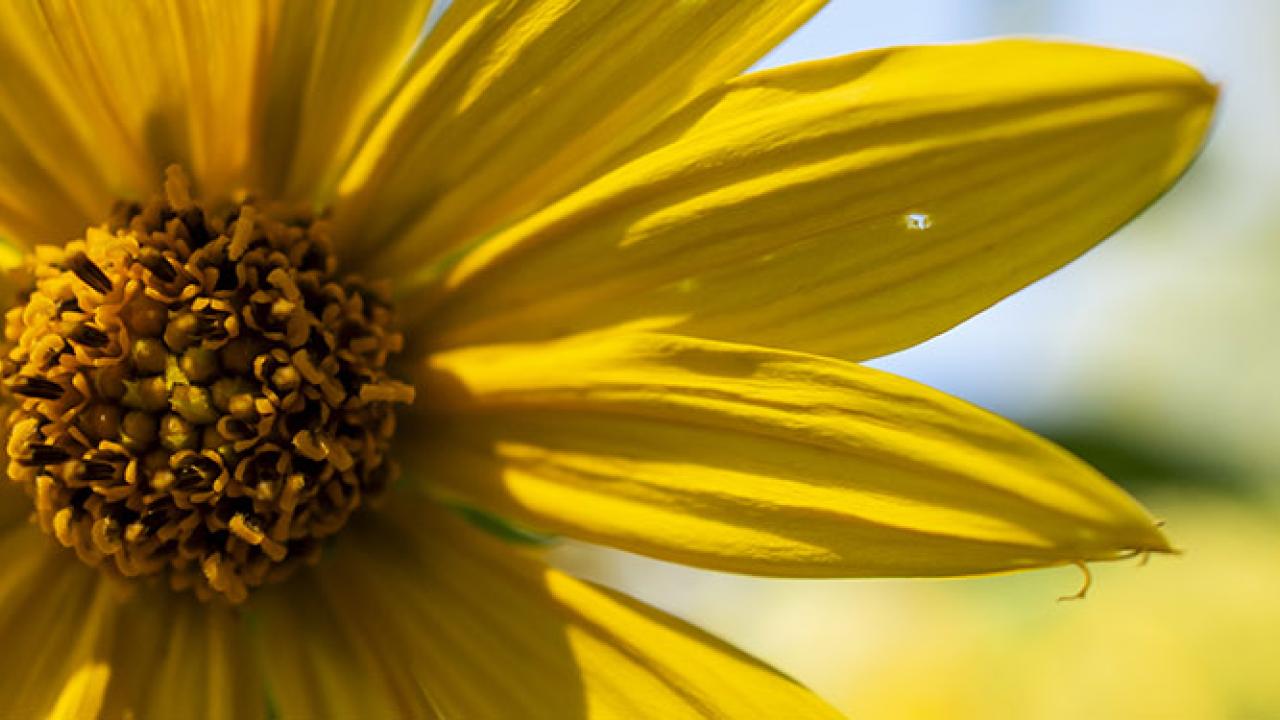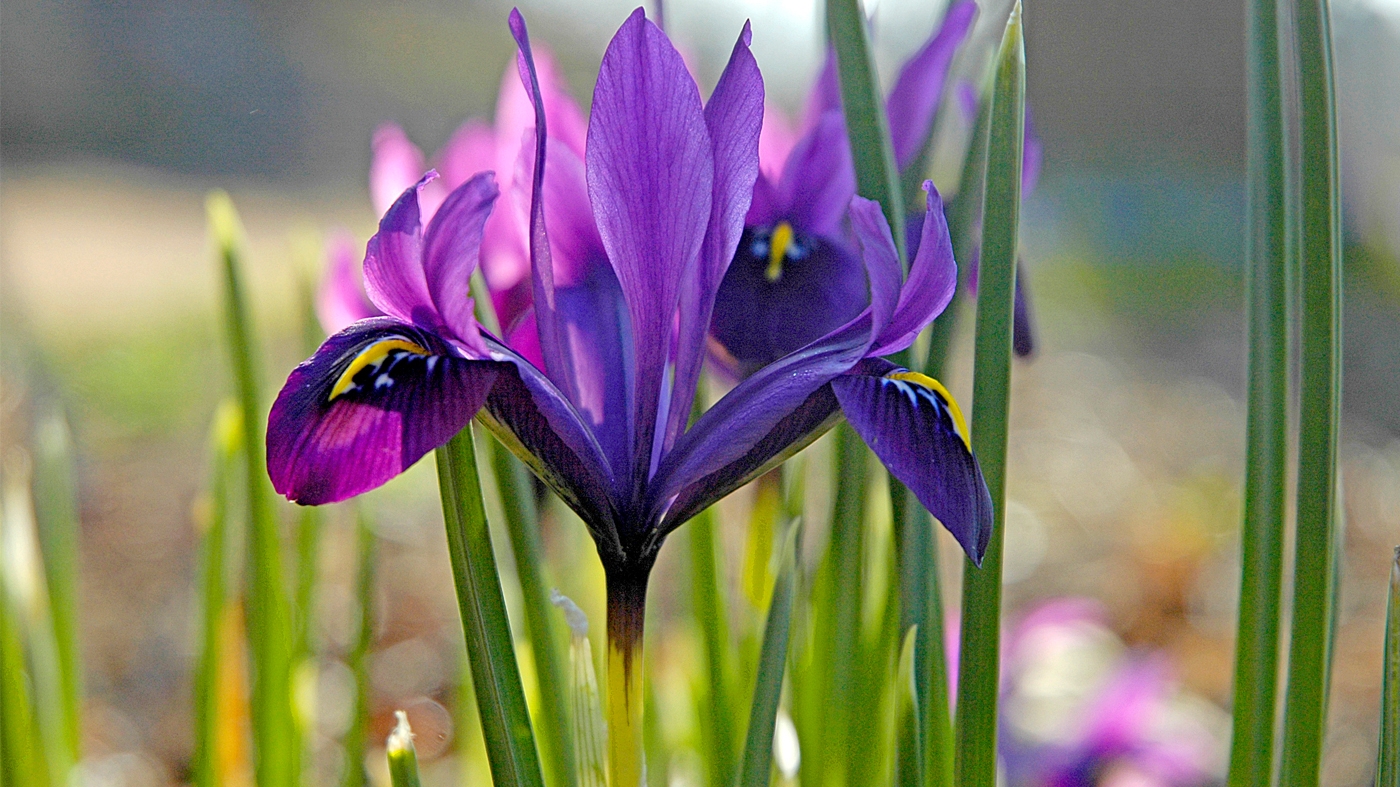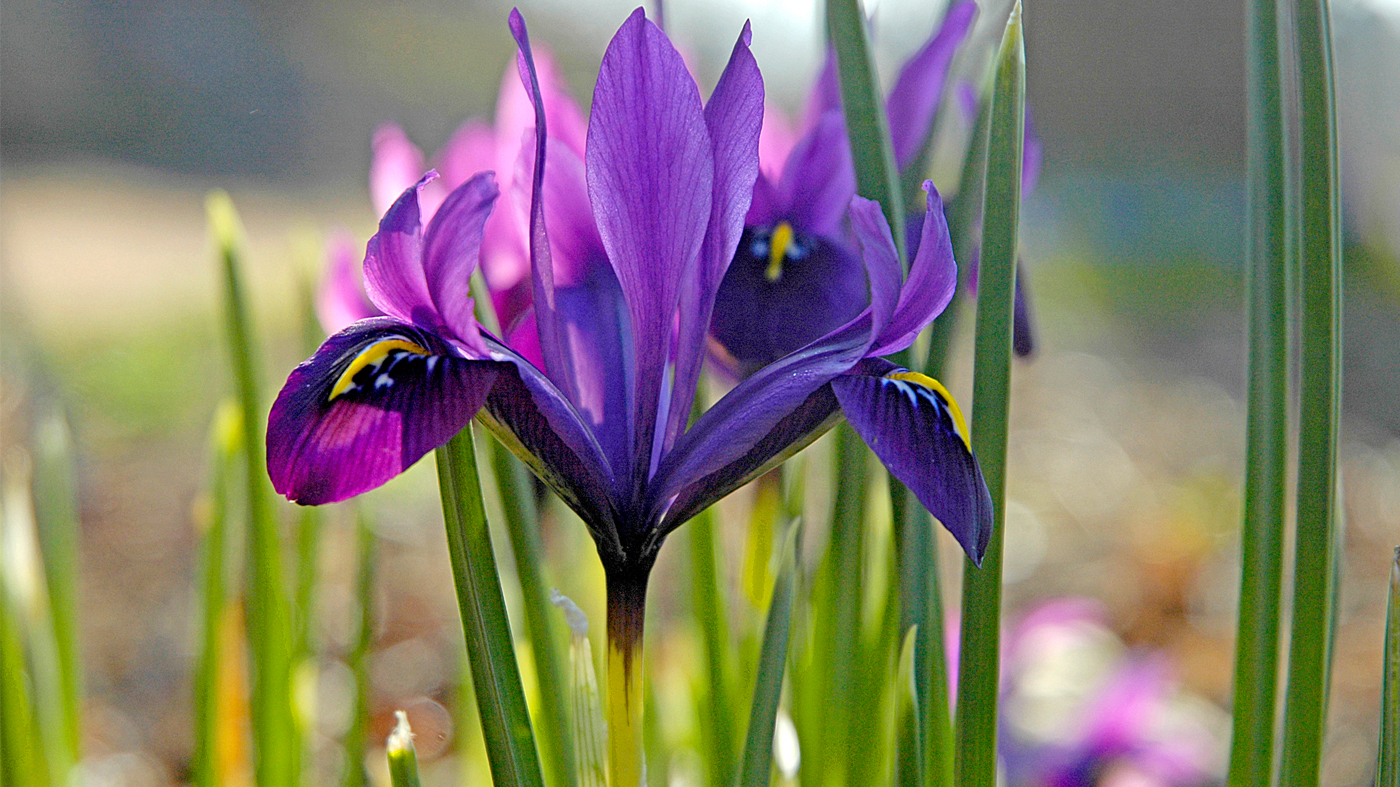

What's in Bloom
Bloom Highlights

Callicarpa dichotoma
Purple Beautyberry
This plant is native to eastern China, the Korean Peninsula, and Japan, where it is found in moist soils of wet woodlands, swamps, bogs, floodplains, and lakeshores. This multistemmed shrub has a rounded habit created by long, slender branches that gracefully arch down away from the center of the shrub. The bright green leaves are borne in pairs and are elliptical, often accumulating to a point at the apex with serrate margins. In the late spring, cymes of small flowers emerge from the leaf axils of young shoots. The flowers have a fused calyx with four distinct petals that are variably pink to white with four exserted stamens. In autumn, the flowers give way to much showier fruits. The green berries ripen to a glossy, bright purple, and they remain even after the leaves drop, lasting into early winter. The genus name is Greek for “beautiful fruit” from calli meaning “beauty,” and carpa meaning “fruit.” The specific epithet comes from Greek meaning “in forked pairs,” from dikho- meaning “in two” and -tomia meaning “to cut.”

Ilex verticillata
Winterberry
This plant is native to eastern North America, where it is found moist habitats such as swamps, river and stream banks, forested bogs, and floodplain forests. It is a deciduous shrub with a habit that is dictated by whether it is single-stemmed or multistemmed. The stems are coppery brown to purply-brown with many lenticels. As they mature, they produce dark grey, knobby lenticel bark. The stems bear glossy green oblong to obovate leaves with doubly serrate margins and hairs on the underside veins. Each spring, clusters of tiny, inconspicuous greenish-white flowers are produced from the leaf axils. These flowers give way to much showier, red, berry-like fruits in late autumn that persist into the winter. Ilex verticillata is dioecious, meaning male and female flowers are on different plants, so for the female plants to develop the showy, red berries, a male plant needs to be planted within 50 feet. The general rule is one male plant for every 10 to 20 nearby female plants. The genus name comes from the unrelated Quercus ilex, whose leaves resemble those of the winterberry. The specific epithet means “in whorls” in Latin.

Pyracantha ‘Gnozam’
Gnome® Firethorn
This cultivar is a hybrid of Pyracantha coccinea, which is native to southern Europe from Spain and France through the Balkans into the Caucasus and upper Middle East, where it is found in open woodlands and thickets on slopes, in coastal areas, and along roadsides. It is a deciduous shrub with an open, erect habit with arching branches. The stems are dark red and coppery before producing smooth reddish-brown bark with many lenticels bearing glossy, semi-evergreen, dark green leaves that are narrowly elliptic to lanceolate with shallowly serrate margins in an alternating arrangement. The branches also bear needle-like spines. Leaf and spine axils produce corymb inflorescences of showy, white flowers in the spring and summer. After the flowers fade, pome fruits develop in September and fully ripen, turning shades of red and orange that persist well into winter. This cultivar is noted for its cold-hardiness, compact habit, and bright orange fruits. The genus name comes from the Greek words pyr and akantha, meaning fire and thorn respectively, in reference to its thorny branches bearing bright scarlet and orange pome fruits. The specific epithet means “with narrow leaves” in Latin.

Schizachyrium scoparium ‘Little Red Fox’
Little Red Fox Little Bluestem
Schizachyrium scoparium is native to much of North America east of the Rocky Mountains, where it is found in tall grass prairies, savannas, open woodlands, hillsides, and along roads. It is a perennial grass with an erect, clumping habit. Each clump has many round, unbranching stems that produce sheathing, filiform, strap-like leaves that are bluish-green. In August, the stems terminally produce tall stalks that extend above the foliage to form one-sided or spiral racemes of fuzzy spikelets. In autumn, the foliage and racemes lose their blue-green hue and turn bronzy orange. However, this cultivar is noted for its short stature and bronzy red foliage and stems in the autumn. The genus name comes from the Greek works schizein meaning “to split,” and achyron meaning “chaff” in reference to the divided appearance of the toothed lemmas. The specific epithet comes from the Latin word scopa, meaning “broom.”

